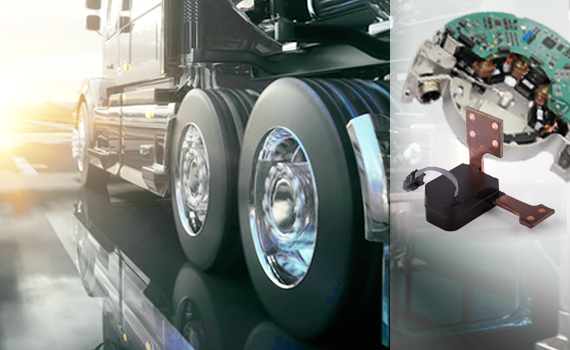Sensitec GmbH
Schanzenfeldstr. 2
35578 Wetzlar
Automotive
Sensitec Lösungen
Sensitec GmbH
Schanzenfeldstr. 2
35578 Wetzlar

Sensitec Lösungen
Schon seit vielen Jahren nimmt der Anteil der Elektrifizierung in Fahrzeugen stetig zu. Einhergehend damit steigt auch der Bedarf an Sensoren. Diese werden sowohl in Komfortbereichen eingesetzt, wie z. B. der Sitzpositionsverstellung, als auch in sicherheitskritischen Funktionen, wie Lenkung und Bremse. Zur Zeit der Einführung des Antiblockiersystems (ABS) setzte man Sensoren ein, die lediglich eine Blockierung des Rades erkennen sollten.
Heute dagegen werden hochauflösendere Raddrehzahl-Sensoren eingesetzt, die das elektronische Stabilitätsprogramm (ESP) mit Daten versorgen, damit das Fahrzeug in kritischen Fahrsituationen gezielt durch Bremsvorgänge an einzelnen Rädern stabilisiert werden kann. Nicht zuletzt bringt der neue Markt der eMobility weitere Anwendungsfelder für Sensoren. Hier müssen Ströme während der Fahrt und an den Ladestationen exakt und hochdynamisch gemessen werden.
Da Stückzahl und Qualität im Automobilbereich eine große Rolle spielen, müssen die Sensoren optimal auf die Anwendung angepasst werden. Sensitec lieferte in den vergangenen Jahren weit über 100 Millionen Sensoren in den Automobilbereich – das Ergebnis von optimierten Prozessen und höchstem Qualitätsanspruch!
Die nachfolgenden Anwendungsbeispiele geben Ihnen einen Einblick, wo unsere MagnetoResistiven Sensoren im Bereich Automotive zum Einsatz kommen.
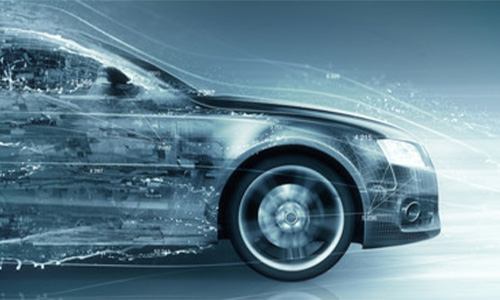
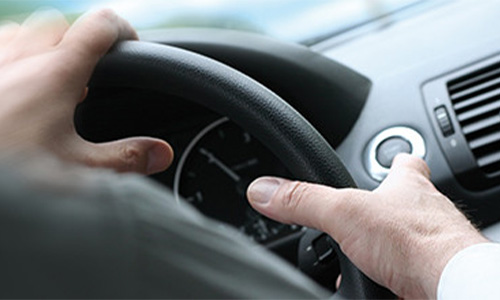
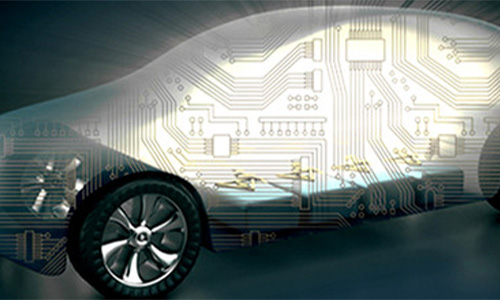
Das ABS – eine kleine Revolution des vergangenen Jahrhunderts: Die Integration eines Assistenzsystems im Fahrzeug, welches den Fahrer bei Vollbremsungen dahingehend unterstützt, dass die Räder nicht mehr blockieren und somit Lenkmanöver möglich bleiben. Der berühmte „Elchtest“ bringt im späteren Verlauf der Entwicklungsgeschichte eine weitere Funktion hinzu, die – auf den gleichen Sensorinformationen basierend – eine Fahrzeugstabilisierung durch gezieltes Bremsen einzelner Räder ermöglicht: Das ESP.
Um solche Funktionen realisieren zu können, benötigt das Steuergerät die genauen Drehzahlwerte der einzelnen Räder. Die Sensoren, die diese Messaufgabe erfüllen, befinden sich direkt an der Radnabe, in unmittelbarer Nähe zur Bremse, in wenig geschützter, äußerst rauer und schmutziger Umgebung. Die Anforderungen leiten sich somit größtenteils von den Umgebungsbedingungen ab. Hinzu kommt der Anspruch an ein zuverlässiges und langlebiges System, welches fehlerfrei die Raddrehzahl erfasst und übermittelt.
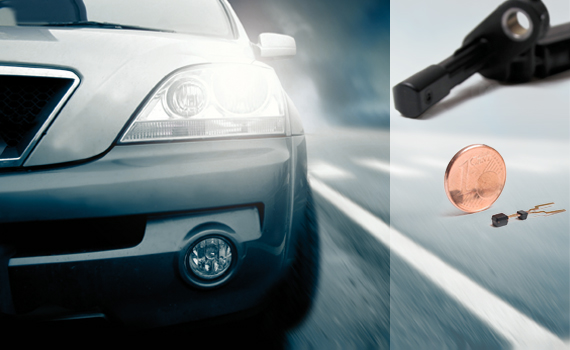

„Servo“-Lenkung ist seit geraumer Zeit auch im Kleinwagensegment Serienstandard. Heutzutage ist die Lenkunterstützung ein ausgeklü- geltes Gesamtsystem, welches weitestgehend mittels Unterstützung per Elektromotor funktioniert. Im Zusammenspiel zwischen Sensorik, Motor und einer Steuerung ist es möglich, die Lenkunterstützung individuell anzupassen, sodass z. B. bei hohen Geschwindigkeiten die Unterstützung reduziert wird. Die Sensorik hat dabei die Aufgabe, neben der Lenkwinkelinformation, auch das Drehmoment – welches in die Lenkwelle eingebracht wird – zu erfassen. Mit dieser Information kann der Elektromotor optimal die geforderte Kraftunterstützung zur Verfügung stellen.
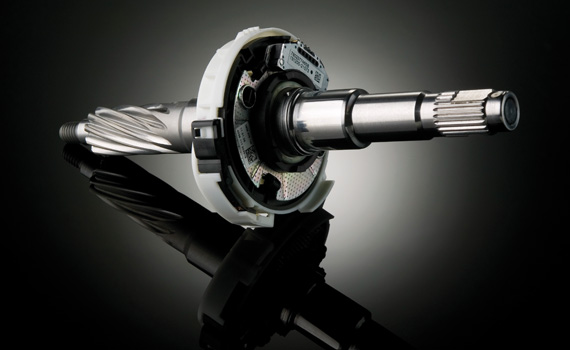

Ziel dieses Förder-/Forschungsprojektes war, einen weiteren Meilenstein im Bereich der Nutzfahrzeug eMobility zu legen. Durch den Wandel der Konzepte von Hybridfahrzeugen mit zusätzlichem Elektromotor bis hin zu rein elektrisch angetriebenen Fahrzeugen, ergeben sich auch neue Konzepte des Antriebs: Kompakte Elektromotoren können dezentral pro Rad eingesetzt werden.
So wurde in diesem Projekt der komplette Antrieb mitsamt der Leistungselektronik in der Radnabe eines Nutzfahrzeuges integriert. Um die Anforderungen der hohen Leistungsdichte innerhalb der kompakten Radnabe zu erreichen, bedarf es auch äußerst kompakter, aber dennoch leistungsstarker Komponenten. Zum Einsatz kommt daher der hochdynamische Stromsensor CFS1000, der direkt mit der Leistungselektronik gemeinsam integriert werden kann.
